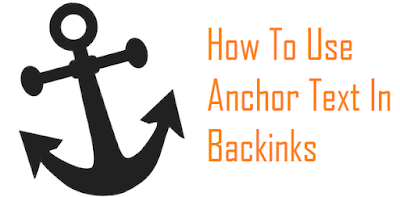How to add nofollow link attribute to any link
One of the biggest misconceptions that I want you to get out of your head is, lots of Dofollow links are bad. On the contrary, Dofollow links are great. It helps in improving your website trust score as long as you are linking to authoritative websites.
In fact, when I was learning about On-page SEO optimization, one thing that I learned is linking to a reliable and trustable source will help you to boost your ranking. Now, let’s look into some aspect of nofollow links.
Dofollow links are links which we want Google to follow from our page, and nofollow links are those links that we don’t want Google bot (Or any other search engine bots) to follow. Usually, whenever we have to link to any bad domain, we use nofollow link attributes.
By default, any WordPress blog or BlogSpot blog adds Dofollow attribute whenever we add any link. Now, when we are linking to any site, and we don’t want to pass the link juice, we use the Nofollow link attribute. This will help to transfer the link juice to correct domain.
Moreover, when you are linking to affiliate products, any spam site for any reasons, make sure to use Nofollow tag attributes. Though, some time back Google specified that Google has started ignoring Nofollow tags, but still SEO guru believes, it’s a good practice to use Nofollow link attributes for such domains when it’s not a quality source. For the info, many search engine bots started following nofollow links, but they don’t use such links for ranking.
- How to add Nofollow Attributes to a link?
<a href="http://www.sayyadgraphic1.blogspot.com">SEO Tips</a>
To make it nofollow, simply add an attribute Nofollow to the link
<a href="http://www.sayyadgraphic1.blogspot.com" rel="nofollow">SEO Tips</a>
When writing in WordPress or Blogger, you can go to Edit HTML mode and add
rel=” nofollow” in front of links to make it nofollow. For WordPress, there are many plugins that do this task for you. Many plugins also help you to make all external links as nofollow, but I don’t find it as White hat SEO technique. One should not be afraid of passing link juice to any reliable source.
Usually to maintain the link juice, we keep our blog comments and external ad links as Nofollow. You can use any of the WordPress SEO Plugins to keep comments and ads link as nofollow. For internal links, I would suggest you keep them as Dofollow (which stays by default) as it will help search engine bots to crawl more pages on your site.
Usually to maintain the link juice, we keep our blog comments and external ad links as Nofollow. You can use any of the WordPress SEO Plugins to keep comments and ads link as nofollow. For internal links, I would suggest you keep them as Dofollow (which stays by default) as it will help search engine bots to crawl more pages on your site.


























